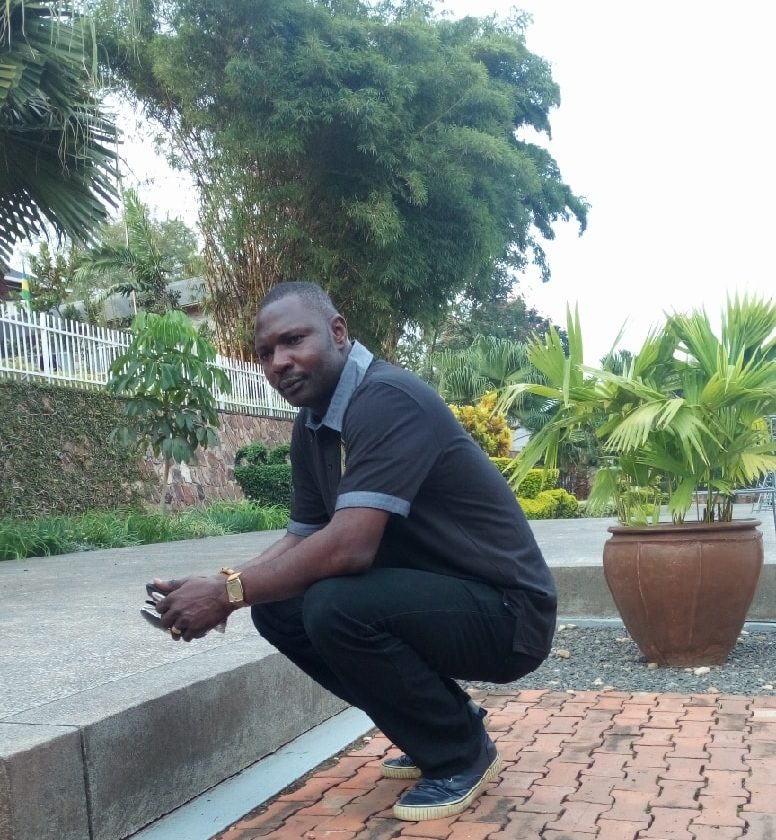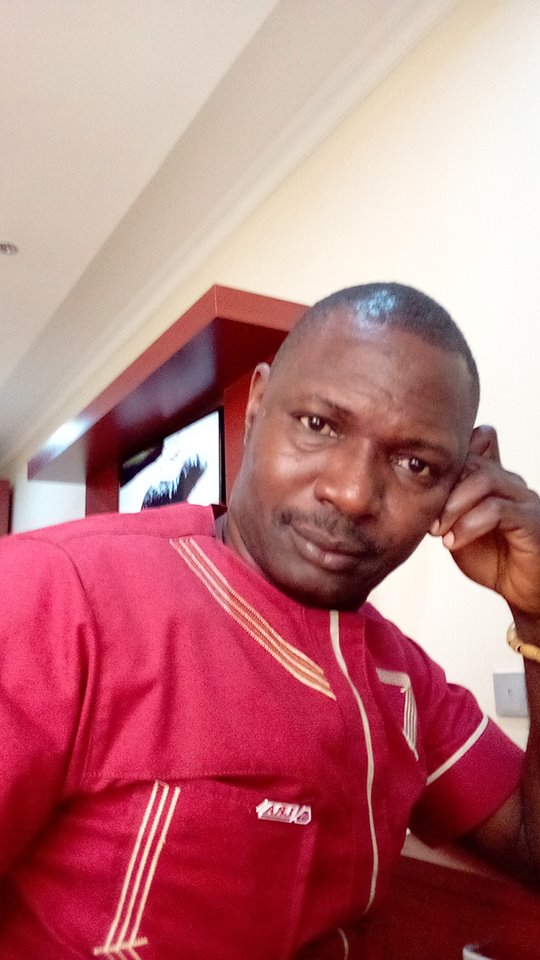By D Kaihenneh Sengbeh
We were all happy to go there. Oh, how our colleagues from Mozambique entertained us, singing their traditional and other South African songs on the bus! We wanted to see the hard evidence of a brutal history—and not to be told anymore. Personally, not going there would have left a hole in my heart and doubt on my mind that I had visited that country. So, I was delighted to go!
After an hour or so on the gigantic bus that meandered through the good-looking bustling city, we were there: a beautiful panorama, nicely trimmed flowers and grass, fine landscaping and no trace of garbage or dirt. Even those among us who had not liked photographing beg to get a snap or “selfie” there. Yes, you can imagine how the camera phones were at work.
Bonheur Pacifique, a tall average-sized black middle-aged man with trimmed beard, emerged and welcomed us at the Kigali Genocide Memorial (KGM) in Gisozi, Kigali. We were at least 50 tax communicators and journalists reporting on taxation from 22 countries who had gathered in Kigali for the 2nd Media Engagement and Training on taxation under the auspices of the African Tax Administrative Forum (ATAF). The first was held in Johannesburg, South Africa in March 2018.

At the KGM, you see individuals and group of people of different nationalities who go to reflect, read and learn about one of the world’s most horrendous mass killings. The place is flooded by probing tourists on a daily basis, who go to see evidence of the horror and learn a bit about Rwanda.
Inquisitively looking in his face, Bonheur would tell us that the Kigali Genocide Memorial is the final resting place for more than 250,000 victims of the 100-day Genocide against the Tutsi in Rwanda in April-July 1914. It honors the memory of the more than one million Rwandans killed in 1994 through education and peace-building. The KGM is a place of Remembrance and Learning.
Bonheur told us that the orchestration of the genocide was to absolutely exterminate the Tutsi minority by the Hutus majority. The Tutsi had been the ruling class for many years, and it was time to get them out of the way for the majority group to take control of Rwanda. Though there had been pockets of fighting and bad blood between the two major Rwandan tribes for some time, the Genocide climaxed it all. Bonheur said the plan was to totally erase the Tutsi from Rwanda, if not the surface of the earth, according to gathered information.
Survivors and many scripted accounts describe the genocide as being unimaginably deadly. I am currently reading a book I bought from the KGM titled: “WE SURVIVED GENOCIDE IN RWANDA”. It contains 28 personal testimonies of survivors. They are touching! These accounts will want to make you cry as the people telling the stories saw the genocide, felt the genocide, fought the genocide, survived the genocide and are living with indelible scars, bruises and memories of the genocide. People were buried alive, tied and thrown into rivers, raped multiple times by gangs to death, infected with HIV and AIDS, made to kill their blood family members, hacked alive and so forth. The accounts are gruesome.
In addition to reading books, one would also see the struggle and get some insight into the Genocide by watching several movies including:
- Hotel Rwanda
- Shooting Dogs
- 100 Days
- A Sunday in Kigali
- Shake Hands With The Devil
- Munyurangabo
- Kinyarwanda
As you will see in some of these movies (should you have time to watch any, if you haven’t), the Hutus militants were reportedly told not to waste precious bullets on their victims. So, they chop off heads, and body parts with machetes, knives and other blotted objects. They were beaten with sticks and clubs with nails on them. Precisely how many people were actually murdered may never be known; estimates vary between 500,000 and over a million. However, the number of people killed is widely accepted as being somewhere approximately 800,000.
So, because we were many, Bonheur told us we would be divide into two groups on the tour of the KGM. I was in the second group, and this afforded me time to buy the book I am reading. Before beginning the tour of the facility (a museum of the genocide) visitors watch a brief video of the genocide — survivors telling their horrible stories. Your heart will sink and you might just feel wetness on you cheeks if your tears are not far away.
After the brief video, we were directed to the museum. Here, all the history and photos of those who were killed are seen — systematic graphical accounts that capture periods before, during and after the genocide. You will see the weapons used for the mass destruction: machetes, knives, clubs, guns and other blunt objects. Yes, killing tools.
You won’t begin shedding tears until you reach where clothes of those killed are displayed. Trousers, shirts, blouses, head-ties, lappas (wrappers), dresses, boxers are all on display and kept in the original form they were collected. You see dirty jeans, and bullets holes, knives or machetes slashes and indelible blood stains on these clothes. By seeing them, you want to imagine how people who wore those clothes were sadistically killed. Dreadful. I couldn’t hold my tears back as I saw and read about them.
Then, my skin quivered when I entered the dark room where hundreds of human skulls and bones are on exhibition. Some are cracked, some toothless, others have holes that appear to have come from hot penetrating bullets and so forth. No, it’s too bad. I learnt these are on display to show the real and hard evidence to visitors and generation unborn of the barbarousness that occasioned the Genocide. It’s a caution that nobody in Rwanda (or any part of the world) should ever think of taking such atrociously bloody path. It seems to be working!
Outside of the exhibition hall are mass graves in a beautiful flower garden. Here, the remains of the people (bones and skulls) were brought from all over the capital after they had been left in the streets or thrown in the river. They are buried together in lots of 100,000. You won’t know they are graves as they appear like large concrete slabs, and are very clean.
There is a visitor center for students and those wishing to understand the events leading up to the 1994 Genocide.
The KGM remains a permanent memorial to those who fell victim to the genocide and serves as a place in which the bereaved could bury their family and friends. It is managed and run by the Aegis Trust on behalf of the National Commission for the Fight Against Genocide (CNLG).
Leaving the KGM and walking on, or driving thru the streets of Kigali, will make you wonder how the people of that African country have managed to be what they are. Rwandans have made considerable progress on the road to reconciliation and are focusing on economic development.
Kigali, the capital, is one of the fastest economic growing cities in Africa. The city is among the cleanest, if not the cleanest, on the continent. Skyscrapers are towering above the ground and pointing into the skies. Infrastructural development is visible, with modern architectural designs over taking colonial ones and with shantytowns turning into little green cities.
The capital, Kigali, has about 1.3 million inhabitants (10 percent of the country’s population). It is regarded as a symbol of Rwanda’s progress. In the city center, one commercial skyscraper after the next is being built. A former Mayor of the city, Fidele Ndayisiba, is quoted in an article as saying, “if the pace of development continues, in 10 years’ time, Kigali will be a modern, flourishing city.” Even if the people beyond the city center still have to wait for modernity to arrive, Rwandans are patient and optimistic about the future. They have used unity, nationalism and patriotism to progress.
According to my research, prior to the genocide, Rwandans carrying national ID cards were identified by their tribes—Hutu, Tutsi or so forth. This is how many were easily identified and slaughtered during the genocide. One of the first things the new government did, after the genocide, was to eliminate the reference to ethnicity in identification documents. From then on, the country’s inhabitants were all “Rwandans.” This has been the key to national unity.
The practice of doing regular community work, which was grounded in the Rwandan tradition of “umuganda,” was reintroduced not only as part of the effort to rebuild the country but as a way to foster a community spirit. Once a month, Rwandans are called upon to perform communal tasks such as building a house for the needy, laying a road or sweeping a square.
The legal process of investigating the genocide and restoring justice proved to be one of the most difficult aspects that had to be dealt with. The International Criminal Tribunal for Rwanda (ICTR) was set up immediately in 1994 in Arusha, Tanzania, in order to prosecute those mainly responsible for the genocide. A total of 65 people were tried at the ICTR; 38 were convicted and sentenced to long jail terms. These plus many other initiatives were taken, and the dividend have only strengthened the people to create love for their country.
Certainly, nearly 25 years after the brutal Genocide, Rwanda continues on its journey of healing and development, and as the country annually commemorates the genocide and the steps taken to get to where it is now, one can only admire their resolve as people and country to remain united and bonded as families—as Rwandans—rather than Hutus and Tutsi.
As I left Kigali late Saturday night (March 9, 2019) I only wondered whether we, in Liberia, can learn anything from Rwanda. We fought for 14 years. About 250,000 people were estimated to have been killed. In 2003, we closed the chapter on the war, follow by three successful democratic elections. It’s 16 years later, and we still seems to be divided and making meaningless noise, and not united to build our country. Something must be wrong!
However, I don’t think it’s late. We can change our mentality; we can build our country by putting Liberia ahead of our selfish interests. With the full implementation of our national agenda, we can rise again. Definitely, we can!
The author is a Liberian journalist and corporate communicator with 18 years of experience. He’s former Assistant Secretary General and Secretary General of the Press Union of Liberia, and a UN Media Fellow. He currently serves as Manager for Communication, Media and Public Affairs at the Liberia Revenue Authority. He’s reached via +231-886586531/-777586531; dakasen1978@yahoo.com
Thanks

